7.8 /10 1 Votes
Producer(s) Yoshiki Okamoto Genre(s) Fighting Arcade system CP System Series Street Fighter | 3.9/5 Kongregate Composer(s) Isao Abe Cabinet Upright Initial release date March 1992 Developer Capcom | |||||||||||||||||||||||||||||||||
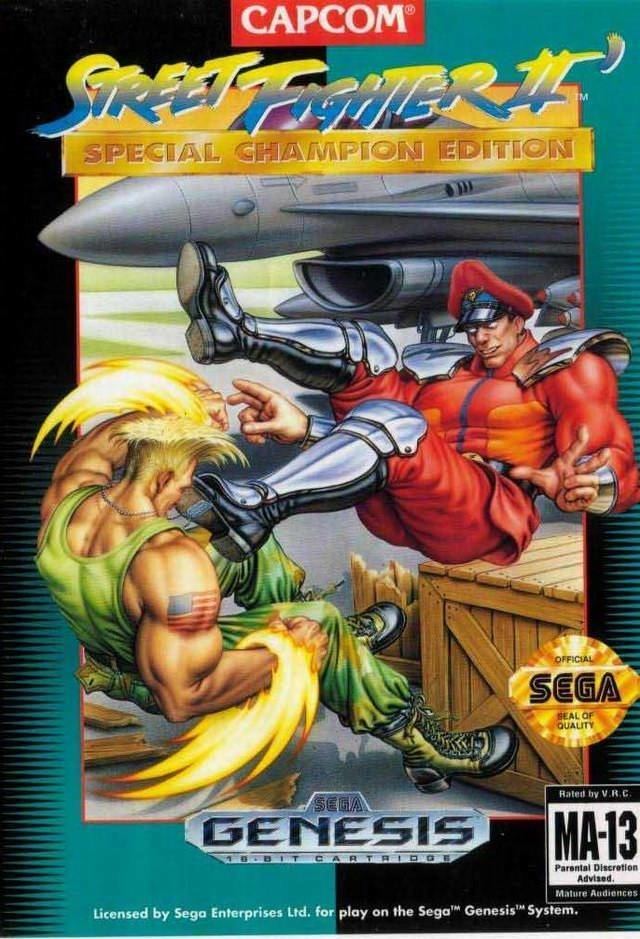 | ||||||||||||||||||||||||||||||||||
Mode(s) Up to 2 players simultaneously Platforms Arcade game, Super Nintendo Entertainment System Designers Akira Yasuda, Akira Nishitani Publishers Capcom, NEC, Tectoy, Gametapes LLC, Capcom Entertainment, Inc. Similar Street Fighter games, Capcom games, Fighting games | ||||||||||||||||||||||||||||||||||
Street Fighter II': Champion Edition (Japanese: ストリートファイターIIダッシュ -CHAMPION EDITION-) is a competitive fighting game released for the arcades by Capcom in 1992. It was the first of several updated versions of the original Street Fighter II: The World Warrior. The main changes were the addition of the Grand Masters (the final four computer-controlled opponents in the single-player mode) as playable characters and mirror matches (same character vs. matches). The fighting techniques of the eight main characters from the original game were also further refined to allow for more balanced competitive play.
Contents
- Gameplay
- PC Engine
- Mega DriveGenesis
- X68000
- Master System
- Other releases
- Critical reception
- Commercial reception
- References
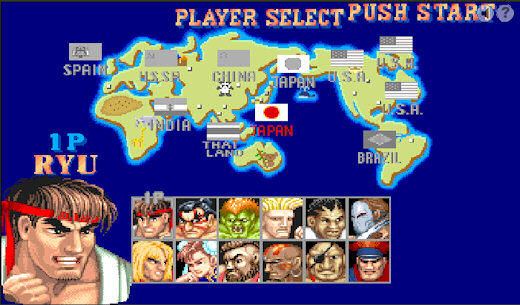
Champion Edition was followed by Street Fighter II′ Turbo: Hyper Fighting, released several months later.
Gameplay
The following changes were made from the original World Warrior edition of the game.
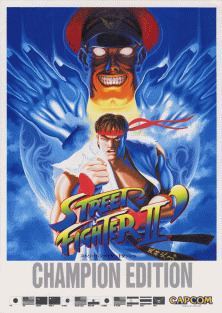
Additional playable characters: The four Grand Masters (Balrog, Vega, Sagat, and M. Bison), who were controlled exclusively by the CPU in World Warrior, are now playable characters. The Grand Masters were considerably toned down from the previous iterations, but are still relatively stronger compared to the standard eight fighters.

Mirror matches: In World Warrior, players were not allowed to choose the same character. This restriction has been eliminated in Champion Edition. Each fighter now has a standard palette and an alternate palette that can be chosen by pressing the Start button. If a palette is already chosen by one player, the other player will be automatically assigned the remaining palette.

Refined character balance: The returning eight main characters had many of their techniques and priorities modified in order to allow for more balanced competition between different characters. Ryu's and Ken's fighting techniques in particular were changed in order to differentiate their common fighting styles.
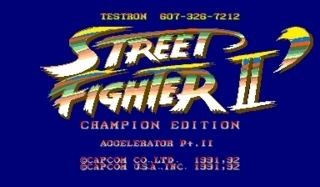
Single-player mode: The matches in the single-player mode was increased from 11 opponents to 12 due to the addition of the mirror matches. This also changed the order in which the third bonus stage occurred (the drum-breaking minigame): in the original game it took place after the match with Vega; wherein Champion Edition, it takes place after defeating Balrog. The endings of some of the returning characters were redrawn (particularly Ryu's, Ken's, and Zangief's), while each of the four bosses received an ending as well. The ending for the boss characters consist of an image of all four Grand Masters (with the character used by the player on top), with scrolling text overlaid on it specific to the player character with a large army of demonic looking soldiers marching below and accompanied by the same ending music.
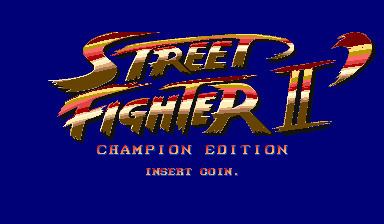
End credits: Like in World Warrior, the game only shows the end credits sequence if the player completes the single-player tournament without losing a match. Whereas the music played in the World Warrior version of the credits was the same music used for the Continue countdown, Champion Edition plays an entirely new track instead. The special credits sequence where the player completes the game without losing a single round was also changed, which now depicts the twelve playable fighters performing their special moves on oil drums and crates.
Graphical changes: Graphical changes were minor. Color changes were made for background stages and were improved overall. Ryu's face in his ending was redrawn with a more serious expression. Ken's fiancee (Eliza) in his ending was given a more realistic design. The Soviet President (a caricature of Mikhail Gorbachev despite him having stepped down after the Dissolution of the Soviet Union) is drawn with a more serious expression in Zangief's ending. The clothes Chun-Li threw away were redrawn in her ending. The drinks Guile's wife is holding were redrawn.
Number of Rounds: The maximum number of rounds was reduced from ten to four. If a "double k.o." or "draw game" occurs when the third round ends, the fourth round will be the final one instead. Like in World Warrior, if both fighters are human-controlled characters, then both players will be declared losers if neither win the final round. If it's the player against the CPU, the CPU will win by default.
PC Engine
The PC Engine version (published by NEC Home Electronics and developed by Capcom) was released exclusively in Japan on June 12, 1993. The accuracy of this port is high compared to the Super NES port of the The World Warrior, as it featured the barrel breaking bonus stage that was cut out from that version, along with numerous voice clips by the announcer and the elephants in Dhalsim's stage (these were later integrated in Street Fighter II Turbo for the SNES). This version was released on a 20-Megabit HuCard. NEC Avenue released the Avenue Pad 6 specifically for the PC Engine version of Champion Edition, which added four additional action buttons (labelled III through VI) in addition to the standard I and II buttons. Other six button controllers were later released for the platform such as the Fighting Commander PC by HORI and the Arcade Pad 6 by NEC Home Electronics. When the game is played on a standard two-button controller, the Run button, along with buttons I and II, are used as switchable attack buttons, while the Select button is used to toggle between punches and kicks. This version was released on Virtual Console on November 16, 2009.
Mega Drive/Genesis
The Mega Drive/Genesis version of Champion Edition, titled Street Fighter II′ Plus: Champion Edition in Japan and Street Fighter II′: Special Champion Edition in North America and Europe, was released on September 28, 1993 in Japan, September 27, 1993 in North America, and October 29, 1993 in Europe. It was first of two Street Fighter II ports for the console and came in a 24 Megabit cartridge.
The Genesis version was originally intended to be a standalone port of Champion Edition, similar to the PC Engine version. However, following the announcement of Street Fighter II Turbo for the SNES, Sega ordered their version to be delayed so that Capcom could add all of the extra content from the SNES Turbo version as well, resulting in the title change.
A six-button control pad for the Genesis, the MK-1653 (or SJ-6000 in Japan), was made primarily for the game, adding three action buttons labelled XYZ in addition to the standard ABC buttons. The game can also be played with the original three-button controller, in which the ABC buttons are used for attacks (light, medium, and heavy), while the Start button is used to toggle between punches and kicks (the pause function cannot be used with a three-button controller as a result).
Special Champion Edition consists of a "Champ" mode with Champion Edition rules and a "Hyper" mode with Hyper Fighting rules, similar to the "Normal" and "Turbo" modes in the SNES Turbo version. This was the first console version of a Street Fighter II game to feature the original opening sequence which depicted two generic martial artists fighting in front of a cheering public (the Japanese version features a white fighter hitting a black opponent, while the overseas versions replaced the black opponent with another white fighter). The ten-stars speed settings in "Hyper" mode, which were only accessible in the SNES version through a cheat code 4, is available by default in the Genesis version, and a cheat code that allows players to adjust the speed in "Champion" mode as well was added in its place. Special Champion Edition was also the only home version at the time to allow players to cancel simultaneous button inputs.
This version was a bestseller in Japan, the UK and USA. In November 1993, Famitsu magazine's Reader Cross Review gave the Dash Plus version of the game a 10 out of 10.
Special Champion Edition was released as a plug'n play system in 2005 as part of the "Play TV Legends" series by Radica. It also included the Genesis version of Ghouls'n Ghosts.
X68000
On November 26, 1993, Capcom released an X68000 port of Champion Edition exclusively in Japan, which consisted of four floppy disks. The port is almost identical to the arcade version, with the same exact graphics and almost identical soundtrack. However, the X68000 version forces player to switch floppy disks when loading different stages and characters (it is possible to avoid this by installing the game to the system's hard drive if the computer has more than 6 Megabytes). The game also included a joystick adapter that allowed players to use the Super Famicom and Mega Drive versions of Capcom's CPS Fighter joystick controller. On an X68030 with multiple PCM drivers installed, the music and voice quality can match that of the arcade version's ADPCM sound system.
Master System
A Master System port of Champion Edition was also released in 1997 for the Brazilian market, published by Tec Toy, although the character portraits in the player select screen are based on Super Street Fighter II. It features only eight characters; Dhalsim, E. Honda, Zangief and Vega are not in this version.
Other releases
Street Fighter II Turbo for the SNES, while based on the succeeding game in the series (Street Fighter II′ Turbo: Hyper Fighting), allows players to choose between Champion Edition rules (Normal mode) and Hyper Fighting rules (Turbo mode).
The arcade version is also included in Street Fighter Collection 2 (Capcom Generation 5) for the PlayStation and Sega Saturn, as well as Capcom Classics Collection Vol. 1 for the PlayStation 2 and Xbox, and Capcom Classics Collection: Reloaded for PlayStation Portable.
Critical reception
Street Fighter II Dash was awarded Best Game of 1992 in the Sixth Annual Grand Prize, as published in the February 1993 issue of Gamest, winning once again in the category of Best Action Game. Dash placed No. 3 in Best VGM, No. 6 in Best Graphics, No. 5 in Best Direction. The Street Fighter II Image Album was the No. 1 Best Album in the same issue, with the Drama CD version of Street Fighter II tied for No. 7 with the soundtrack for Star Blade. The List of Best Characters was not dominated by Street Fighter II characters this time, with the only character at the Top Ten being Chun-Li at No. 3.
The Mega Drive version, Special Champion Edition, received positive reviews. In November 1993, Famitsu magazine's Reader Cross Review gave Special Champion Edition a 10 out of 10. It received 10 out of 10 for both graphics and addiction from Mega, who described it as "a candidate for best game ever and without a doubt the best beat-'em-up of all time" and gave it an overall 92% score. MegaTech scored it 95%, and commented "the greatest coin-op hits the Megadrive in perfect form". Edge gave the PC Engine version of Champion Edition a score of 8 out of 10.
Commercial reception
Street Fighter II′: Champion Edition sold 140,000 arcade cabinets in Japan alone, where it cost ¥160,000 ($1300) for each cabinet, amounting to ¥22.4 billion ($182 million) revenue generated from cabinet sales of Champion Edition in Japan, which is equivalent to $320 million in 2017.
In North America, it was number-one on RePlay's May 1992 coin-op earnings chart for upright arcade cabinets, above Midway's Mortal Kombat. On RePlay's April 1993 charts, Champion Edition was number-four on the upright cabinets chart, and remained number-four on the uprights cabinet chart in May 1993.
Street Fighter II: Champion Edition's arcade earnings exceeded $2.3 billion in gross revenue, making it one of the top 10 biggest grossing arcade games of all time.
The Sega Mega Drive/Genesis version, Street Fighter II′: Special Champion Edition, sold 1.65 million cartridges. Despite this, the port sold under expectations, with competition of the original Mortal Kombat game being cited as a reason for sales not meeting Capcom's expectations.
